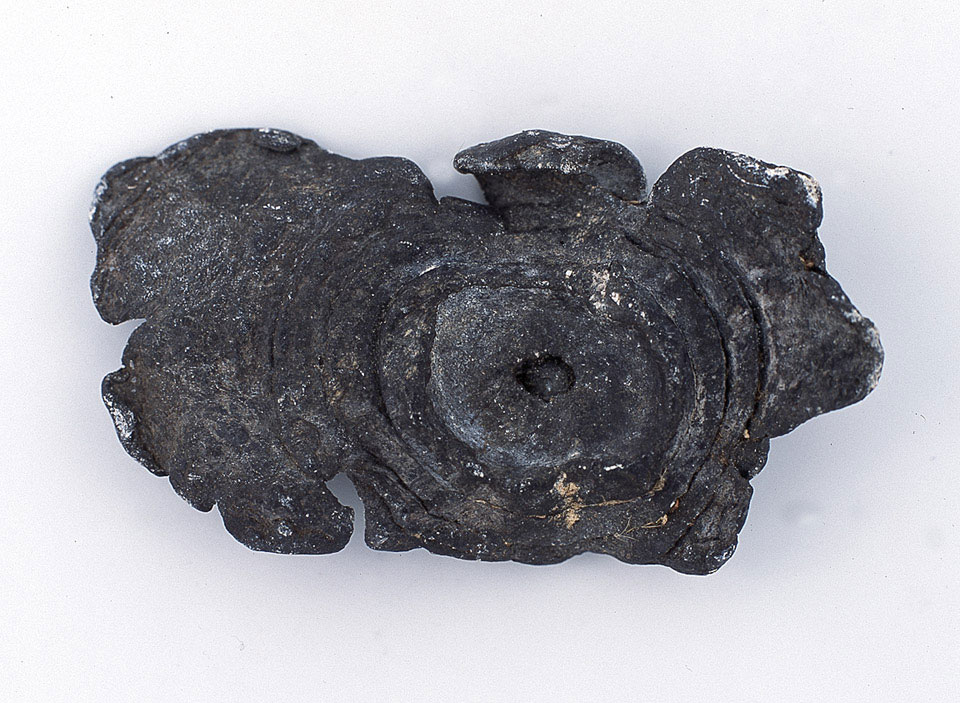
Online Collection
« Prev - 1 of 1 results - Next »
Minié bullet, found in the cemetery outside Sevastopol on 18 June 1855
This 'splashed' lead Minié bullet has been flattened upon hitting an object after being fired. It was picked up by a J B Robert in the cemetery outside Sevastopol, which was captured by Major-General William Eyre's Brigade on 18 June 1855. Robert sent it home in an envelope to his sister, but being made of lead and so heavy he commented in the accompanying note that he could only send one bullet on account of the expense of postage.
The Minié, named after its designer Captain Claude Etienne Minié, was created in 1849. It used an expanding bullet patented by Henri-Gusatave Delvigne. The Delvigne-Minié system was a major advance in the development of small arms allowing for easy loading, greater range and accuracy. By the spring of 1851 a series of trials testing the Delvigne-Minié system were being set up for the first time in Britain. Due to the shortage of arms at the time, a contract was arranged for 28,000 Minié's to be manufactured, despite the results of the trials not yet known. The results of the Minié trials found the new rifle musket to be as durable as its smoothbore predecessor, proving easy to load due to the revolutionary expanding bullet.
Yet in spite of the positive feedback, problems were identified which led to further experimentation. As the Minié became more widely used complaints grew so that by February 1854, the Board of Ordnance found the Minié to be unsatisfactory and replaced the ball drawer with one taken from the obsolete Brunswick Rifle. No further muskets were sent abroad until the Crimean War (1854-1856) when the Minié was really put to the test. Many infantry regiments were issued with Miniés in exchange for their smoothbore muskets when they arrived in Turkey and Bulgaria. The 60th (The King's Royal Rifle Corps) were the first to be completely reissued with the Minié as a replacement for their old Brunswick Rifles.
NAM Accession Number
NAM. 1959-03-86-1
Copyright/Ownership
National Army Museum Copyright
Location
National Army Museum, Study Collection
Object URL
https://collection.nam.ac.uk/detail.php?acc=1959-03-86-1

